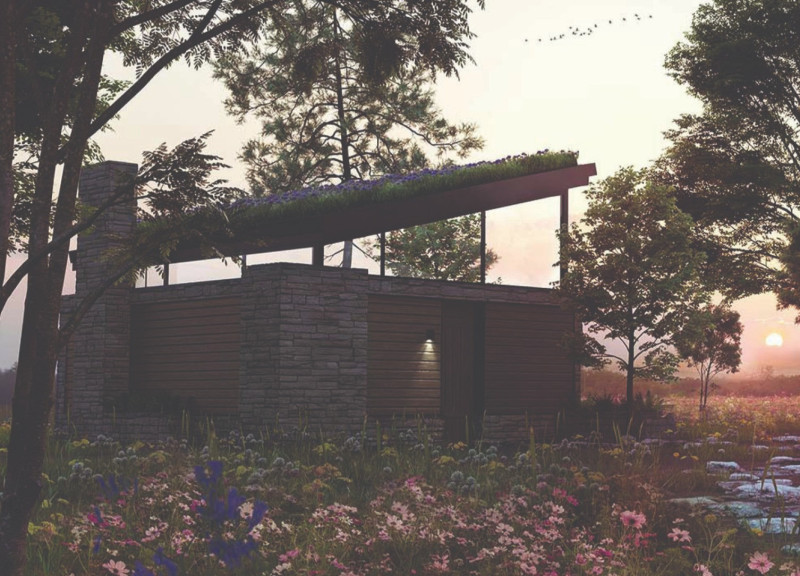5 key facts about this project
At its core, "The Poet Wanderer" reinterprets traditional Latvian architectural forms while infusing modern design sensibilities. The project serves a multifaceted function, primarily as a communal living space that encourages social interaction through shared facilities and private accommodations. The architectural design includes a central common building equipped for various activities, ranging from communal dining to hosting events. Surrounding this key structure are individual huts designed to provide different levels of privacy and comfort, catering to a diverse array of residents and visitors.
The layout of the project is significantly influenced by the natural topography, with buildings thoughtfully positioned to maximize views and protect user privacy. Pathways interconnect the various components of the site, creating a seamless flow that invites exploration of both built and natural elements. The design promotes a series of journeys, enticing individuals to discover hidden corners of the landscape, engage in quiet contemplation, or gather for social activities, thereby enhancing the overall user experience.
Materiality plays a crucial role in the project’s identity. The selection of local materials, including concrete, stone, wood, and glass, reflects an understanding of the environment while providing structural integrity and aesthetic appeal. Concrete is used for its durability and modern feel, while stone adds a rustic touch that echoes traditional building practices. Wood brings warmth to the interiors, fostering an inviting atmosphere that encourages users to feel at home. Additionally, the use of large glass windows creates visual transparency, effectively blurring the boundary between indoor and outdoor spaces. This integration not only invites natural light into the buildings but also draws the stunning natural landscape inward, creating an immersive experience.
Unique design approaches include sustainable energy strategies, such as the incorporation of solar panels for electricity generation. These systems promote self-sufficiency and reduce the environmental impact, aligning with modern considerations of sustainability in architecture. The passive design elements, like strategically placed overhangs that provide shading, further enhance energy efficiency, showcasing a commitment to both environmental and user health.
Another noteworthy aspect of "The Poet Wanderer" is its flexible living arrangement. The design features various hut configurations—single, double, and couples’ types—allowing for adaptability to different resident needs. This flexibility encourages community living while respecting individual privacy, highlighting a nuanced understanding of modern social dynamics.
Overall, "The Poet Wanderer" stands out as a project that embodies the principles of thoughtful architecture by harmonizing with its natural surroundings and emphasizing community interaction. Each design choice is deliberate, aiming to cultivate an enriching experience for its occupants and promoting a lifestyle that values nature. As you explore the project presentation, you will gain deeper insights into the architectural plans, sections, and designs that make this project a commendable example of contemporary architectural ideas.


























